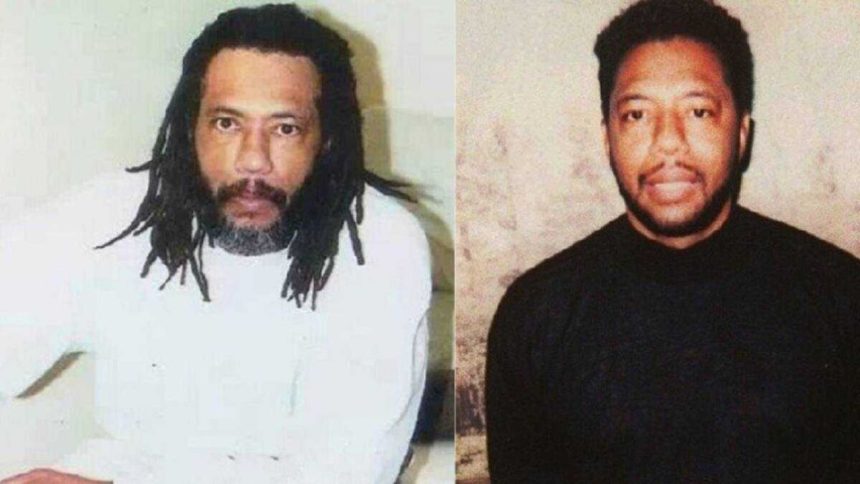Larry Hoover’s name carries weight—whether as a notorious gang leader, a symbol of criminal justice debates, or a polarizing figure caught between redemption and retribution. His story spans decades, weaving through Chicago’s violent streets, federal supermax prisons, and even the Oval Office. Recently, Donald Trump’s commutation of Hoover’s federal sentence reignited discussions about crime, punishment, and second chances. But who is Larry Hoover, what landed him in prison, and why does his case spark such fierce debate? Let’s break it down.
The Crimes That Built a Legacy
Larry Hoover didn’t just join a gang; he helped build an empire. Born in Mississippi in 1950, he moved to Chicago as a kid and by his teens, he was deep in the gang life. By the late 1960s, he merged his crew, the Supreme Gangsters, with David Barksdale’s group, forming the Gangster Disciples—a name that would become synonymous with power, violence, and drug trafficking. Under Hoover’s leadership, the gang ballooned into a nationwide operation with tens of thousands of members and a reported $100 million a year in drug sales in Illinois alone.
Hoover’s first major conviction came in 1973 for ordering the murder of 19-year-old William “Pooky” Young, a rival drug dealer gunned down in a Chicago alley. The state hit him with a 150-to-200-year sentence, but prison bars didn’t stop his influence. Prosecutors say he kept running the Gangster Disciples from behind bars, orchestrating drug deals, extortion, and even murders through coded messages and trusted lieutenants.
You Might Like: Demi Lovato Is Married! Meet Her Husband, Jutes: Do They Have Children?
The feds weren’t having it. In 1995, after a massive investigation dubbed “Operation Headache,” Hoover was indicted on federal charges. By 1997, a jury convicted him of running a continuing criminal enterprise, conspiracy, money laundering, and more. The result? Six life sentences stacked on top of his state time. He was shipped to ADX Florence, Colorado’s notorious supermax prison, where he spent nearly 30 years in solitary confinement—a concrete box with minimal human contact, reserved for the “worst of the worst.”
The Pardon and the Unresolved Debate
Trump has commuted the sentence of Larry Hoover pic.twitter.com/KKcKTTilqk
— SAY CHEESE! 👄🧀 (@SaycheeseDGTL) May 28, 2025
Fast-forward to 2025: Donald Trump commutes Hoover’s federal sentence, calling it “served” with no further penalties. Hoover’s legal team and supporters celebrated, framing it as a win for rehabilitation. They argue he’s a changed man—a 74-year-old who’s disavowed gang life, earned his GED in prison, and even studied Abraham Lincoln’s legacy. High-profile advocates like Kanye West (now Ye) and Drake amplified his case, hosting a “Free Larry Hoover” concert in 2021 and lobbying Trump directly.
But here’s the catch: Hoover isn’t free. His 200-year state sentence for Pooky Young’s murder still stands, and Illinois Governor JB Pritzker hasn’t signaled any plans to commute it. Critics, including former prosecutors, blast Trump’s move as dangerously naive. Ron Safer, who led Hoover’s federal prosecution, calls him “the most notorious criminal in Illinois history,” a man who “ran a ruthless drug empire from prison” and whose gang was tied to countless murders. Even a federal judge once interrupted a hearing to ask Hoover’s lawyer, “How many other murders is he responsible for?”
The debate boils down to this: Is Larry Hoover a redeemed elder deserving mercy, or a crime kingpin who fooled the system? His supporters point to his community efforts in the ’90s—food drives, school supplies, and a short-lived gang truce—as proof of change. Detractors see a manipulator who never truly quit the game, citing allegations he promoted Gangster Disciples members as recently as 2021.
Also See: Chase Chrisley’s $500K Fortune in 2025: How the Reality Star Makes Money
For now, Hoover remains in limbo. His federal commutation might move him from Colorado’s supermax to an Illinois prison, but his fate hinges on the state’s mercy. One thing’s certain: his story isn’t just about crime and punishment—it’s about who gets a second chance, who decides, and why. And in a divided America, those questions don’t have easy answers.



